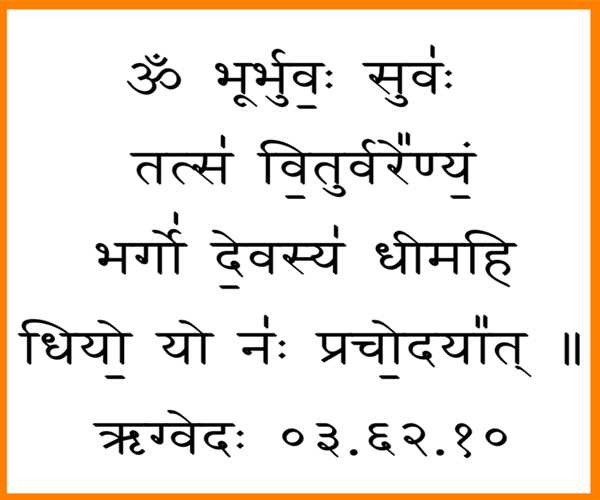Search here

27-Oct-2023 , Updated on 10/28/2023 7:08:03 AM
The scientific reason behind offering water to sun in Hindu dharma
Providing water to the sun is a long-standing tradition in Indian culture and has been an integral aspect of Hindu religious ceremonies for many centuries. Although the act holds numerous cultural and religious significance, its basis lacks scientific justification.
In ancient periods, individuals held the belief that the sun possessed divine qualities and held significant influence over the natural realm. The act of presenting water to the sun was believed to be a significant gesture of honoring the sun deity and recognizing its immense strength and impact.
From a scientific standpoint, providing water to the sun may have advantageous outcomes. Providing water to the sun in the cool hours of the morning can enhance its cooling effects, making it more revitalizing and indispensable for sustaining life. Consuming this water can aid in replenishing the body's moisture levels and enhance overall well-being.
Furthermore, the act of presenting water to the sun may hold a deeper symbolic significance. Expressing gratitude and recognizing the significance of the sun's role in supplying light, warmth, and vital energy to sustain life on our planet. Engaging in this activity also contributes to fostering attentiveness and establishing a profound bond with the environment.
Our body relies heavily on colors, as they play a crucial role in maintaining the overall health and functioning of our various body systems. It may come as a revelation to some that various regions of the human body exhibit distinct hues. The colors of our organs vary, with nerves appearing blue, the heart red, kidneys and pancreas having a brownish hue, bones being white, and the brain's nerves displaying a vibrant rainbow spectrum.
When sunlight goes through a substance, it separates into its individual colors, even though the original rays are white. When we properly offer water or jal to the rising sun in the morning, the water falling onto the ground acts as a conduit to break down the sun's rays into a range of colors, which then enters our body and brings us beneficial effects.
In order to correctly and properly offer water to the sun, it is essential to adhere to the prescribed method. Turn towards the sun while holding a container filled with water. Keep the container positioned at a height where it is neither directly under the sun nor too far above eye level. Gradually release the water onto the ground, creating a path for the sunlight to penetrate through the falling water. When the sun's rays penetrate the water, they will separate into different colors and transmit into the person's body, providing both spiritual and physical advantages. Nevertheless, there are individuals who believe that the water container should be grasped at the level of the chest.
Harnessing solar energy in this way utilizes a renewable resource from the environment with zero negative consequences. According to Hindu texts , the harmful bacteria responsible for various fatal diseases can be eradicated by the sun's ultraviolet rays. Hence, when presenting water, a sacred chant is recited.
Greetings to the divine light of Dev Jyoti for the purpose of eliminating obstacles and destruction.
In addition to healing and alleviating illnesses, worshiping the sun god, Surya also enhances one's vision. From an astrological perspective, the sun represents an individual's vision, essence, and paternal figure. By providing water to surya, one can rectify previous negative actions towards their father, improve eyesight, and experience spiritual elevation.
In accordance with mythology, a group of beings known as the Mandehas resided on Arunam Island and sought the favor of Lord Brahma through their prayers in order to receive a blessing. which he agreed to provide They requested the ability to engage in combat against Surya.
Darkness is preferred by demons, as they oppose the rising of the Sun and have initiated a battle against it.
Brahma introduced the concept of Arghya to ensure the continuity of life in the absence of sunlight.
The Gayatri Mantra is chanted and dedicated to Surya by the Brahmins, who belong to the first three castes. The water, empowered by the Gayatri, transforms into a powerful tool, engaging in battle against the demons hindering the Sunrise. The mandalas continuously retreat, only to be persistently halted by this arghya, allowing the sun to dawn without interruption.

In a more intellectually profound manner, the essence of this concept lies in the idea that demons symbolize ignorance. "Man-deha," which refers to the combination of the mind and body, represents the ignorance that arises from associating our identity with our physical and mental states, encompassing emotions such as lust, anger, and greed. On the other hand, the Sun personifies knowledge. Using the powerful Gayatri Mantra, we present offerings to the sun, receiving enlightenment and dispelling ignorance.
The Gayatri is a powerful invocation aimed at seeking divine enlightenment for the world to transcend the veils of ignorance.
During the vedic era, followers of Sanatan Dharma (Hindus) were aware that the sun can be classified as a star, known as 'aditya'. Additionally, they possessed the knowledge that there was a celestial body orbiting another body, potentially either the sun or the earth. This celestial motion contributed to the creation of various phenomena such as rhythms, seasons, time, and the passing of ages. The sun, while still immense and awe-inspiring in present times, held an even greater sense of wonder and captivation for them – it truly intrigued them, to say the least. An embodiment of a deity, quite literally! Perhaps due to its immense size and enigmatic nature, there were few entities comparable to the sun.
Therefore, in the ritual of 'arghya', they expressed their reverence to the deity and showed gratitude to 'Surya dev' for bestowing life on the planet.
In the present era of scientific and technological advancements, it is well-established that the sun is comprised of hot plasma intermingled with a magnetic field. It is common knowledge that the sun is classified as a G-type main-sequence star with a future transformation into a white dwarf, and so on. However, can we deny the undeniable truth that life on our planet would have been utterly impossible without sun.

SEO and Content Writer
I am Drishan vig. I used to write blogs, articles, and stories in a way that entices the audience. I assure you that consistency, style, and tone must be met while writing the content. Working with the clients like bfc, varthana, ITC hotels, indusind, mumpa, mollydolly etc. has made me realized that writing content is not enough but doing seo is the first thing for it.
Comments
Join Our Newsletter
Subscribe to our newsletter to receive emails about new views posts, releases and updates.
Copyright 2010 - 2025 MindStick Software Pvt. Ltd. All Rights Reserved Privacy Policy | Terms & Conditions | Cookie Policy